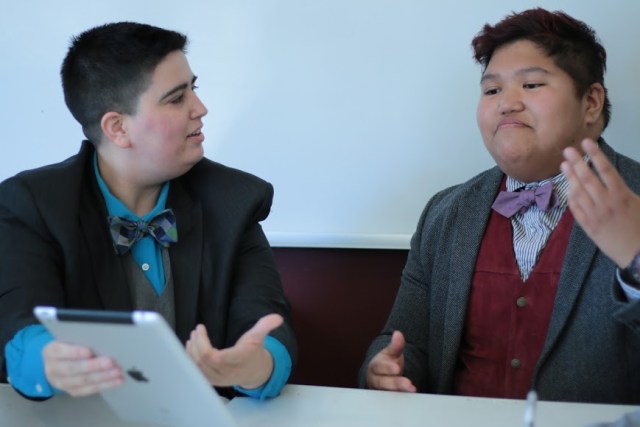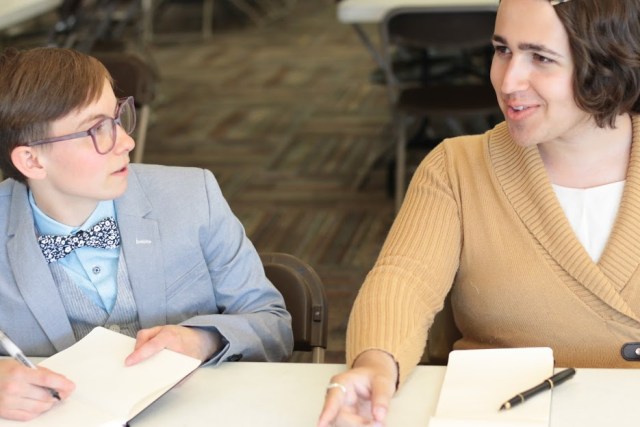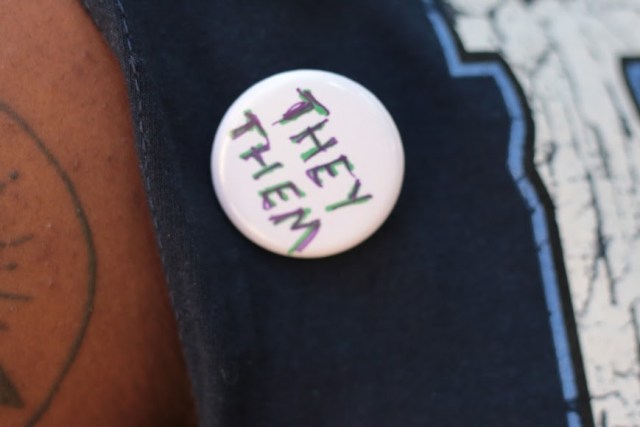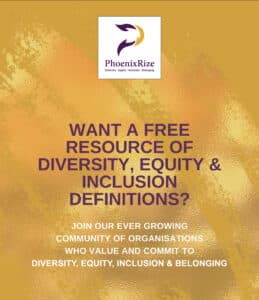Welcome to Be The Change, a series on grassroots activism, community organizing, and the fundamentals of fighting for justice. Primarily instructional and sometimes theoretical, this series creates space to share tips, learn skills, and discuss “walking the walk” as intersectional queer feminists.
How do you know if a meeting is “bad”? Let’s just say you’ll know it when it’s happening.

HALP. (via Shutterstock)
Signs you’re in a bad meeting include, but are not limited to:
- seething resentment as you listen to one (man) person dominate (mansplain) over and over again,
- dawning existential dread as you realize that absolutely no one is facilitating,
- a dull glaze of apathy expressed acutely in resting bitch face,
- the disintegration of your very last fuck to give that everyone can see you’re playing with your phone,
- a gnawing headache because everyone is chattering at once about five different topics, or
- a sincere wish for swift death as the clock ticks by the three hour mark.
Meetings are a fact of life for most of us. In the organizing world, meetings are pretty much a given. Some days I feel like all I do is plan and attend meetings because that is literally all I do some days.
Meetings don’t have to be the worst, though. A good meeting is a meeting well-planned and a well-planned meeting is a meeting that is
- efficient,
- effective, and
- leads to actionable outcomes.
Here are a few tips to help you make the most of your meetings, whether you’re gathering community members to talk about an issue, strategizing on a big campaign with coalition partners, or starting a new activist group from the ground up.
1. Maybe Don’t Meet?

“So you’re just telling me now that you could have just emailed me?” (image by Taylor Hatmaker)
I know this seems like a counterintuitive tip to kick off with. However, no one wants to waste time and there’s no greater waste of time than a meeting that could have been an email or a phone call. Before you plan a meeting, consider that a meeting may not be the best tactic. Ask yourself: What am I trying to accomplish or communicate? Is it something I can more quickly and effectively accomplish by making a few phone calls? Or sending a text? Or shooting off an email update?
For example, if you just need to report to your group on your progress since the last time you met, you might just send a memo or email. If you need to solicit group feedback on an idea or engage in a group strategy session, a meeting makes more sense vs. starting a long email chain.
2. For a Good Time, Come to This Meeting

Come for the free pizza; stay for the artists for sexual justice strategy session! (image via Shutterstock)
Want to attract people to your meeting? Make it seem like a good time and a good use of attendees’ time:
- Feed the People: Free food is always a major draw! Food also sets a more comfortable and open tone—something about sharing a meal/snack together puts people at ease. For a low-cost alternative that also builds a sense of community, make the meeting a potluck!
- Set the Stage: Make it super clear what your meeting is about, what topics will be discussed, and why it’s important that people come in your announcement or meeting invite.
- Make it Social: If it’s appropriate to your meeting, it might be helpful to schedule social time for attendees at the beginning of the meeting. Have background music playing and snacks to keep people energized.
- Break the Ice: Use an icebreaker activity to help people loosen up and get into meeting mode. It can be anything from a serious or silly question to a game or an improv activity. A more physical icebreaker can energize a group. A more discussion-based or small-group icebreaker can help set the tone for a dynamic dialogue. A problem-solving icebreaker can help build a sense of teamwork.
3. Roles for All, All for Roles

Notetaker and facilitator are super helpful meeting roles. (image by Taylor Hatmaker)
A meeting doesn’t have to have a chair or one leader. It can. It helps, though, to have assigned roles. These roles can be the same at every meeting, like officer positions (chair(s), secretary, etc) or the roles can rotate at every meeting in a decentralized meeting style. Clearly defined roles ensure that the meeting is efficient and moves forward and that participants have a good experience at the meeting.
At a minimum, you should consider having these roles:
- Facilitator: This person take a leadership role, “runs” the meeting, follows the agenda, adjusts the agenda as necessary, leads group activities and discussions, ensures everyone is able to participate, and opens and closes the meeting.
- Notetaker: This person writes notes and send the notes out after the meeting. This person may also be the one to send around a sign-in sheet to collect contact info for follow-up.
If possible, you might also assign these roles to keep things running smoothly:
- Timekeeper: This person helps the facilitator keep the meeting on-track by keeping an eye on the clock. If time is running out for an agenda item, the timekeeper will let the facilitator and/or group know that they are coming close to the allotted time.
- Writer/Scribe: This person can keep a visual representation of the meeting in real-time using, for example, chart paper to write down big ideas or record brainstorming sessions in large writing for all to see. This frees up the facilitator to focus on leading the group during a brainstorming session or group process activity.
4. Master the Art of the Agenda

Homosexual Agenda:
Introductions (10 minutes)
End Cisheteropatriarchy Strategy Brainstorm (20 minutes)
Cat Pictures (10 minutes)
Misandry Report-Out (15 minutes)
Review Action Steps (5 minutes)
Choose Next Meeting Date (5 minutes)
A detailed agenda will help you keep your meeting on track and prevent an epically long, boring meeting from accidentally happening.
You can solicit items for, write, and send out an agenda in advance. You can assign someone else to make the agenda. The facilitator can also create a “consent agenda” at the beginning of the meeting by soliciting items and making the agenda on-the-spot with everyone’s input and consensus.
Agenda items should have a realistic amount of time assigned to each item, as well as the name of the persons(s) needed for the agenda item. This gives you a plan and a big, bird’s eye view of the meeting.
If you need to make adjustments to the agenda, you can do so before the meeting. You can also change the agenda during the meeting, if necessary.
Always leave a space for reviewing action items (to-do things that people said they’d do) at the end of the meeting, as well as time to pick the next meeting date (or devise a plan to do so soon). This keeps the group moving forward and focuses the group on concrete next steps.
5. Creating Safe and Inclusive Meeting Spaces

(image by Taylor Hatmaker)
It’s always important to try to create safe spaces, but it’s especially important in activist spaces. Making our activism intersectional is vitally important and part of that is being earnest and thoughtful in creating spaces that are welcoming and inclusive of everyone.
Here are some ways you can take steps towards safer meeting spaces, as a facilitator:
- Group Brainstorm Ground Rules: Start the meeting with a group brainstorm of shared ground rules. Have some good ones in mind to suggest if they don’t come up organically like speaking one at a time, respecting each other, confidentiality, etc.
- Give the Option of Sharing Pronouns: It’s not always helpful to ask everyone to share their pronouns, as some trans or gender nonconforming or gender nonbinary people may not feel comfortable doing so, especially in mixed company where they may not be sure they’re safe to be out. However, find a way to give people the option. For example, you can share your pronouns and invite others to do so if they wish to when you’re doing introductions. You can have buttons or stickers with pronouns that people can wear. You can have a spot on name tags for people to write in their pronouns.
- Use a Progressive Stack: A stack is a term that refers to keeping track of who wants to speak next, so folks don’t have to keep their hands up forever and so everyone doesn’t speak at once. It’s literally a list, sometimes even written down, that keeps track of who is next to speak. A progressive stack is a stack that prioritizes voices that are less likely to be amplified. So, for example, if two people have their hands up and one person has already participated a lot and the other hasn’t, the facilitator will call on the person who hasn’t spoken as much. Or, if there are a bunch of people with their hands up, the facilitator will call on those who are of underrepresented or those of marginalized identity/ies first.

